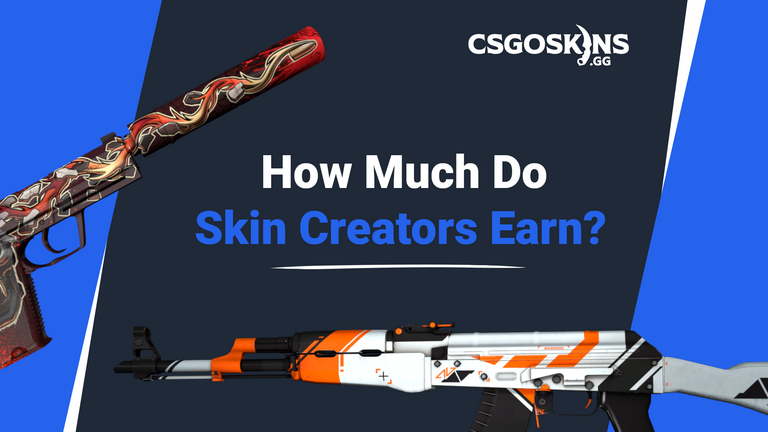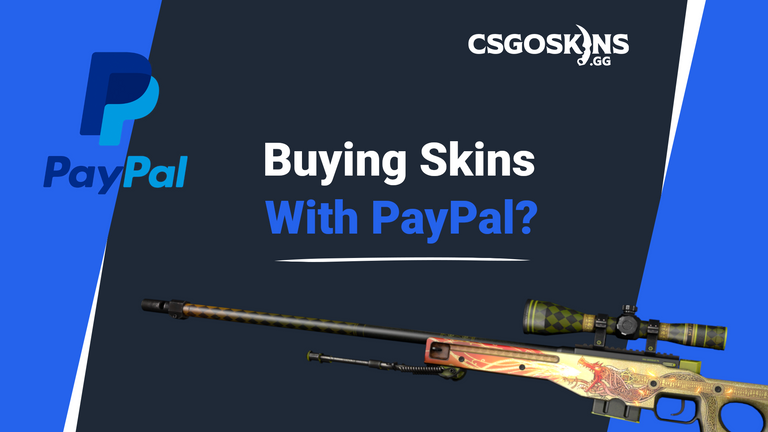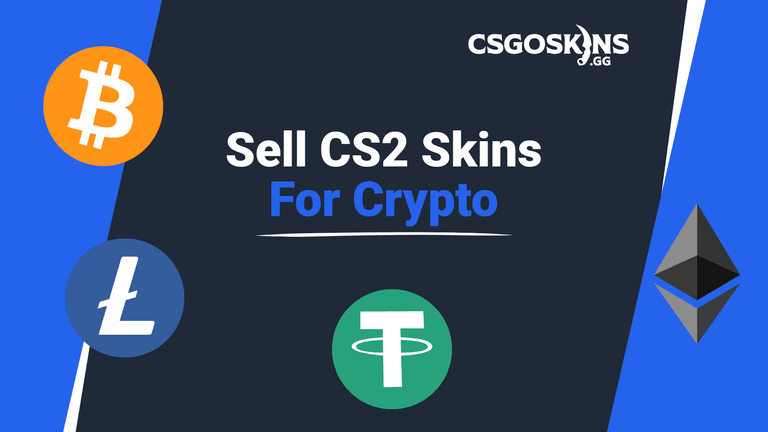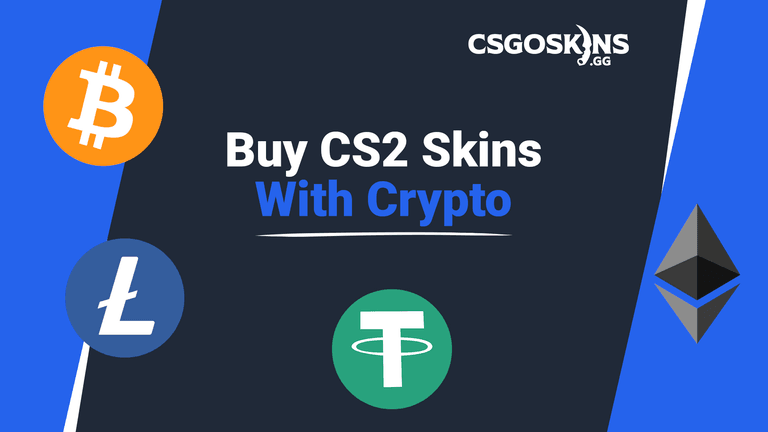How Much Do CS2 Skin Creators Earn?


CS2 has been a dominating force on Steam for more than a decade and has seen its player base grow steadily year-on-year to now become the most popular game with the highest number of current players on the online platform. There have been many reasons for the game’s success. Two of these pivotal factors were a large number of players from all over the world and well-known names from the professional scene that carried over from the 1.6 version of CS to its latest iteration, CS2. However, the number of players that carried over was still nowhere near the number that plays the game currently, probably being around less than even half of where it stands now. So how did the player base more than triple during these past many years and how did Valve manage to add close to a million players to a game which always seemed to be considered dead at the release of every new competitor like Valorant, Fortnite, PUBG, and so on?
An important factor that has always persisted throughout the years, is that the game wasn’t ever let to die at any stage of its existence. Each year, there were numerous updates that either improved an existing aspect of gameplay or introduced a new one, continually adding to both the longevity of the game and engagement with the player base.
Perhaps the most groundbreaking of all these was the Arms Deal update which came a year after the game’s release and laid the foundation for the success we see today. The Arms Deal update introduced cosmetic items known as skins, which also featured extremely rare drops in the form of knives with different finishes.
The Rise Of The Skin Creators
Initially, the Arms Deal update was a monetization scheme seen many times in other games from different publishers as well, and it was viewed by the CS2 community in pretty much the same light; as a way for the company to make more money. But Valve had another ace up their sleeve.
A year after the Arms Deal update, they introduced the Steam Workshop, enabling community members to get involved further in the scene and develop skins themselves, with a chance of having them released in one of the cases for a monetary reward.
Within a few years, the scene around CS2 skins had grown tremendously. Various third-party marketplaces developed with the aid of the Steam API and dealing in CS2 skins became a hit, paving the way for players to buy and sell these in-game items in exchange for real money. Professional players, influencers on YouTube and other online platforms, as well as extensive advertisements by third-party marketplaces also played a big role in further hyping up the skins as they were released with each new case.
People who had been skeptical of paying large amounts of money for in-game items started to become convinced that there was more to this virtual market than just another avenue for spending on a hobby. It seemed like a way of making some money in return.
But the potential for making money was not solely there for those investing in skins. Valve was promising substantial returns to members of the community who would create skins. People have always wondered exactly how substantial this amount could be, and although it has been many years, no one has been able to give an exact figure. And so in this article, we will try to give you some understanding of how much a skin creator can expect to earn on a single weapon skin if it is selected for release in a new case.
The Skin Creator Version
For the most part, creators have remained tight-lipped about their earnings, giving the impression that Valve has strictly implemented a policy against speaking publicly about it. This statement however was debunked in one of Ohnepixel’s videos on Youtube where he is seen talking to a skin creator who goes by the name T-R3x3r. The creator mentions that there is no such policy in place and that they are free to share the amounts they have earned, but they are bound by the terms not to share how these are calculated.
The artist then goes on to state that depending on the popularity of the case, a creator can expect to earn an average of 420k USD per skin. He mentions that for more popular cases, the amount can be expected to double, or halved for less popular cases.
Valve’s Version
If you check out an announcement by Valve about the Community Workshop posted on August 30, 2014, it states that till this time, over 70 weapon finishes and stickers have been released which were developed by community members, earning them a combined total well over USD 3 million, which averages to 40k USD for each contribution. This was 9 years ago though. A time when the skin market was in its infancy at best. Since then, Valve has not provided any updated figures for us to be able to have any idea of what the earnings could look like.
On the basis of other publicly available information provided by Valve, we delved deeper to see what we could find. The About section of the CS2 Community Workshop mentions a 25 percent revenue share for item creators from direct sales of their items. However, this is a cryptic statement at best. For instance, it was revealed by an artist that a map he developed had been offered 150k USD, which was similar to the amount offered for other maps as well, a fact which does not seem to reflect the above percentage since maps don’t generate revenue on their own. So we can probably assume that the above percentage only applies to weapon skins or stickers, which can be sold directly to users, with the word ‘directly’ implying a particular skin or sticker being sold on the Steam Community Market from one user to another, and a percentage of the revenue collected by Steam going to the artist.
This statement is completely ignored in the Weapon Finishes section of the Community Workshop FAQ, where it states that the final step for a selected skin is for it to be added to a Weapon Case and the revenue generated through key sales shared with the contributor. Both statements make completely different claims.
Lastly, we refer to the Community Workshop Supplemental Terms related to Revenue Sharing. The terms provide more details but remain cryptic with regard to actual figures or percentages. However, we found the clarity that was missing from the previous sources, specifically that mentioned in sections 6 & 7 of the terms. Section 6 pertains to revenue generated from key sales, and characterizes it as indirect revenue. It also states that the share for each contributor is allocated at the sole discretion of Valve, which means that each contributor may end up with a different cut of the revenue. On the other hand, section 7 mentions revenue sharing of fees collected from items that can be sold by users on the Steam Community Market and states that Valve may choose to share a portion of the game fee from sales of a particular item.
Our Analysis Of Skin Creator Earnings
What we can derive from the findings above is that the 25% revenue sharing mentioned in the CS2 Workshop pertains to the direct sale of a skin on the SCM and is taken out from the 10% fee charged by CS2 for SCM sales, which is then shared with the contributor of the particular skin. Furthermore, Valve shares a percentage of revenue from key sales with all the contributors, but determines the shared percentage at its own discretion. Although it would be a monumental task to figure out the exact amount of revenue that an average contributor is able to earn, it would be safe to assume that in the present times with case openings at an unprecedented high, they may easily make around the USD 500k - 1M mark, perhaps even more.
Does The Weapon Tier Affect Earnings?
As per the Revenue Sharing Terms, it is Valve that ultimately decides the cut of revenue sharing for each contributor. It may choose to pay a higher share to an artist who designed the Covert tier skin in the case and may choose to pay a lower share to contributors who made the Mil-Spec tier skins. Or it may disregard this methodology altogether and pay each artist an equal share.
Does It Matter If The Skin Is Part Of A Case Or Collection?
Collections for the most part are rarer than cases, usually dropping during majors, or are available for a limited time from Operation events. Due to this rarity, their unboxing numbers remain low in comparison to most cases which negatively affects earnings. Similarly, cases from Operations are also rare and have a similar effect on earnings. The highest earnings that can be made are from new cases that become a part of active drops.
Does Having Multiple Artists Involved In A Skin Submission Affect Earnings?
If a skin is selected for a new case and there are multiple contributors for it, the revenue share for that particular skin will be divided equally among those contributors. The individual earnings of the contributors will therefore be lesser in comparison to the other artists, provided they were the sole designers of their skins.
Getting Started With Your Own Skin Submissions To The Workshop
Although a detailed tutorial would fall beyond the scope of the article, we can however give you some ideas on how to get going. A good place to start is by checking out the guidelines provided by the Steam Community Workshop itself.
Before getting down to business, be sure to check out the official CS2 workshop documentation. There’s a FAQ section which is quite helpful, as well as downloadable content in the form of weapon files and other tools which will be necessary for the designing phase.
The Weapon Finishes Guide which is also accessed via the official documentation provides detailed descriptions for the various weapon finishes, style guides as well as some very useful tips on what the CS2 team looks for when selecting skins for a case.
If you don’t possess prior experience with graphic design or lack the necessary skill with software programs used for such a purpose, there are in-depth tutorials available on YouTube which are a great help. You can even find step-by-step guides for making CS2 skins to make one of your own.
Once the designing process is out of the way and the skin is ready, you can view it in the workshop workbench accessible in-game via the developer console. If you are satisfied with your craft, you can then save the file and finally publish it in the workshop.
The Odds Of Having Your Skin Selected
The CS2 Community Workshop states that so far, 389,678 items have been posted by contributors, with 1,048 of them having been selected so far. If we divide the number of items selected by the ones submitted, we get odds of 0.26%.
So, a 0.26% chance of having one of your skins selected for a case. This is the same chance you have of unboxing a rare item from case unboxings, if we are to go by the official unboxing odds released by Valve for the Chinese market.
Concluding Remarks
Although the chances of having one of your designed skins be accepted in the game remain pretty slim, it’s still a hugely lucrative idea that should not be missed. People investing in skins, cases, and stickers understand that the returns usually come slowly over a long period of time, and sometimes sooner if you get lucky with a particular investment that gets hyped for some reason. However, the secret path of getting to the big bucks goes through the Steam Workshop.
So brush up on those artistic skills, get the creative juices flowing, have some skins uploaded to the workshop, and hope for the best. Just make sure not to shoot yourself in the foot by copying someone else’s artwork.


